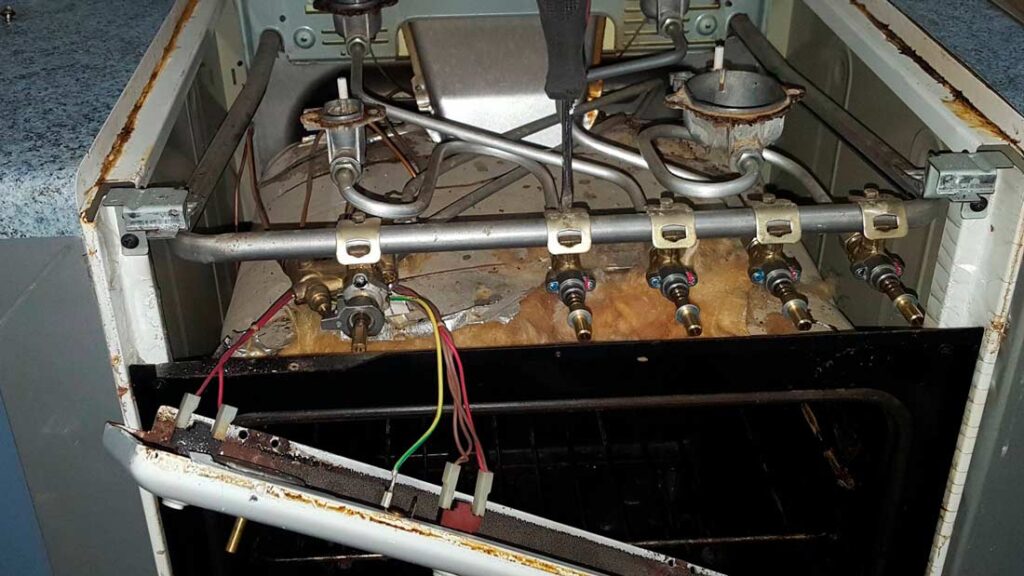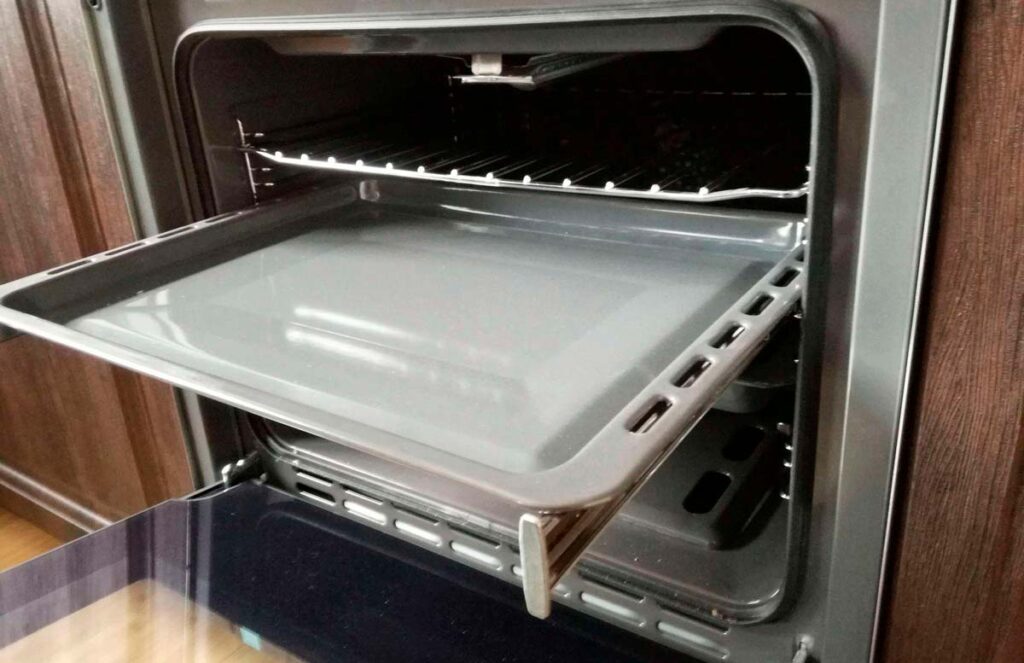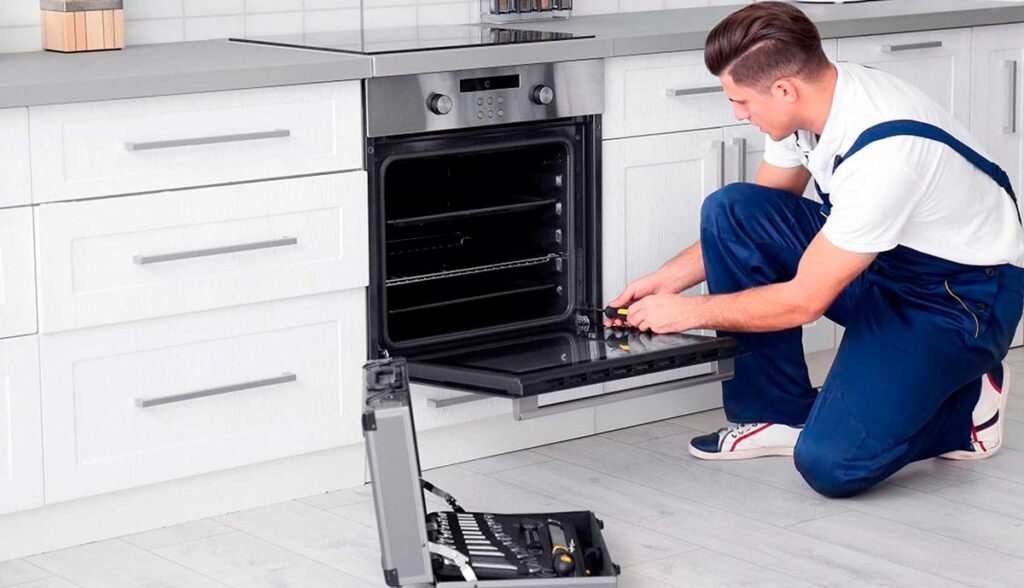The oven is an indispensable helper in every housewife’s kitchen. When appliances malfunction or break down during cooking, it is very frustrating for owners. However, there is no need to panic. Many breakdowns can be repaired with your own hands, while the rest can be easily fixed by the masters of the service centers.
Signs of malfunction
The principle of operation of the gas oven consists in heating the air by burning the gas coming from the city pipeline or a cylinder. The supply of natural fuel is regulated by means of a tap on the gas line. The fuel then passes through a nozzle, mixes with the air and ignites, providing the heat required for cooking. The most common equipment malfunction is caused by a malfunction in the gas control system, which causes the fire to suddenly go out. Signs that a gas stove oven is not working are as follows:
- Gas is coming in, but the flame does not ignite when the button is pressed;
- The appliance heats the food weakly or unevenly;
- The doors do not fit properly or the oven does not close;
- The fire goes out some time after ignition;
- The heat in the oven is not regulated;
- Does not go out as long as you hold the knob;
- Fire is yellow-red;
- Oven smokes;
- Burner flames are at different heights;
- The door jams when the door is opened;
- Oven gets very hot when operating.
Gas is a source of extreme danger. Mixed with air, it becomes easily flammable and explosive, so there are only a number of steps you can take when making repairs yourself without calling a qualified technician. You can identify some possible causes of what is happening. The main ones are as follows.
- Lack of oxygen. May cause problems with combustion. Try running the unit with the door open.
- The burners are clogged. This part may just be clogged with combustion products, then the heat is uneven or simply not enough. The gas control system may shut off the gas supply, thinking that there is no flame, the fire will go out as soon as you release the knob. The problem is easily solved. Remove the burner, clean it and reinstall it. When cleaning, use a liquid cleaner, powders spoil the technique.
- The burner is misaligned. If the burner is incorrectly positioned or moved, it will cause uneven flame and heating, sooting. Check the location of the part and correct it if necessary.
- Fuel pressure in the gas line has dropped. Inspect: it is possible that there is no need to call a service technician, and the reason for the trouble is an almost empty cylinder or problems with gas supply to the gas line. Weak flame intensity may not allow to start the system.
- The regulator is not holding. Do you turn the knob, but it won’t turn on? Try lighting without it to check. Carefully dismantle the knob, saving all the small components that are hard to find later. Armed with pliers, gently squeeze and turn the valve stem. When the gas flows, try to light it.
- The auto ignition function has failed. If the gas comes on and the flame doesn’t ignite, don’t keep the knob turned for long and gas the room. There is a hole in the front center of the oven for lighting with matches.
- The temperature sensor has moved out of the flame zone. You must then return it to its previous position to resume operation.

When baked goods don’t bake well, the heat in the oven is weak, it may be time to change the rubber seal on the door.
The best way to check the insulation is to hold your hand near the rubber band. If the air is hot, it means it’s time to call a technician and change the insulation.
Although ovens are “long-lived” among appliances, and some have been in operation for over 50 years, there are still malfunctions caused by broken parts inside the appliance. Sometimes there is wear and tear on the gas control components. Perhaps the contacts in the system have oxidized and need to be cleaned. During operation, there is also constant heating of the thermocouple, which leads to its destruction. Sometimes this part cannot be repaired. It is simply replaced with an identical new one.
The temperature is maintained by a mechanical thermostat. It is a cylinder with a liquid filler. The device is placed inside the oven. At high temperature, the cylinder filler expands, pushing the valve, which closes the gas supply. If the oven is constantly underheating, the thermostat may need to be replaced.
One of the reasons why the unit cannot be turned on can be the wear and tear of the ignition unit or a faulty solenoid valve. The longer the service life, the more likely such trouble will occur. The valve is usually simply replaced. The function of the unit can be checked. Turn off the light in the room at night. Turn on the electric ignition. Look at the result:
- No spark at all – the wiring is damaged;
- Spark goes to the side – crack in the spark plug;
- The spark is yellow or red – the unit has malfunctioned.
Most often, when gas ovens malfunction, owners are in no hurry to call a specialist, hoping to make repairs themselves. What breakdowns can and are not dangerous to fix with your own hands? About it below in our article.
- Cleaning the knob of the regulator. Before proceeding with the repair, turn off the gas supply. Troubleshooting begins with cleaning the taps. After removing fouling, dirt and grease from them, the spring is cleaned. The plug is wiped carefully so as not to damage it. Disturbing the surface will cause a gas leak. Use only a soft sponge. Next, the plug is treated with graphite grease without touching the holes. The grease is removed from the stem with a knife. After reassemble the handle in the reverse order of disassembly.
- How to repair the oven door. Over time, the oven door fasteners loosen, then it does not fit tightly or does not close. To fix the problem, unscrew the mounting screws that connect it to the stove. After loosening them well, move the door in different directions until you find the position in which it is firmly seated on the hinges. To check, place a piece of paper between the gasket and the edge of the oven. If it does not seat properly, repeat the procedure. When the hinges are in place, screw the bolts back into place.
If it is noticed that the loss of heat is due to damage to the seal around the perimeter of the door, it should be easy to replace it.
- Remove the old seal. In some models of the oven it may be attached with screws, to get to them, pull away the protruding edge of the rubber, in others it is glued.
- Wash the channel and door with liquid detergent. Clean off any old sealant or adhesive residue. Degrease and clean.
- Install the new sealant by starting from the top, then down and to the sides. Complete the process by joining the edges in the center at the bottom. If the rubber needs to be glued, choose a heat resistant adhesive with a food grade tolerance of 300º.
Among other failure options
- Checking and stripping the thermocouple. The oven fires while you’re holding the knob – then you need to check the thermocouple attachment. In its lowest position, it should be touching the tongue. If not correctly positioned, most models are allowed to adjust with screws. Perhaps the thermocouple contacts are fouled and this is interfering with flame maintenance. Try sanding the part down with sandpaper.

When these procedures are not enough, the thermocouple will most likely have to be replaced.
- Replacing the heating coil. If the oven is not heating due to a faulty heating coil, it can be replaced by yourself. This part is sold in the electronics department. To replace it, you need to remove the back of the case, release the coil from the fasteners, unscrew the porcelain beads. Then place the new coil in its original place and fasten it. Reassemble the oven.
It happens that during prolonged use, rust corrodes the surface of the housing, and holes form. You can repair a burned-out case on the outside of the oven by sanding such places with an emery cloth and using cold welding. When the weld has cured, it is grinded and covered with enamel.
- You can smell gas. If the stove is not working and you can smell gas, there is a crack somewhere in the piping, there is a leak. Shut off the fuel supply, call and call the emergency gas service. Further work can only be carried out by qualified specialists. To locate the leak, disassemble the unit and apply soapy foam to all gas tube connections outside and inside the oven. Where the fuel will come out, bubbles will appear. Check all controls, knobs and taps. Remove the side panel of the stove and prevent leaks in the internal structure.
Regular preventive maintenance will help you avoid breakdowns and keep your oven running longer. Follow the operating instructions for the appliance. Adhere to the cooking techniques and recommended temperatures for different foods. Review the construction of the oven’s various components. Recommendations for washing and lubricating the components are also important.

Always make sure the walls and bottom are clean after baking or stewing, this will help improve the function of the appliance. Remove dirt and food debris. This will prevent the internal parts of the oven from clogging and deteriorating. Use a quality household cleaning product. Cheap powders will scratch the door glass, destroy the enamel, and make the seal stiff.
Ovens are considered reliable appliances. If the appliance breaks down, you don’t always need the help of an expert. Some malfunctions can be repaired with your own hands. For example, to make cleaning of individual elements, replacement of regulators, seals, heating coil, adjusting the oven door and thermocouple. When it is impossible to find the cause of failure, do not do without calling a worker of the service center. Usually the problems are solvable, and repairs do not take long. For Brooklyn oven repair, I recommend going to this website https://bestserviceappliancerepair.com.

